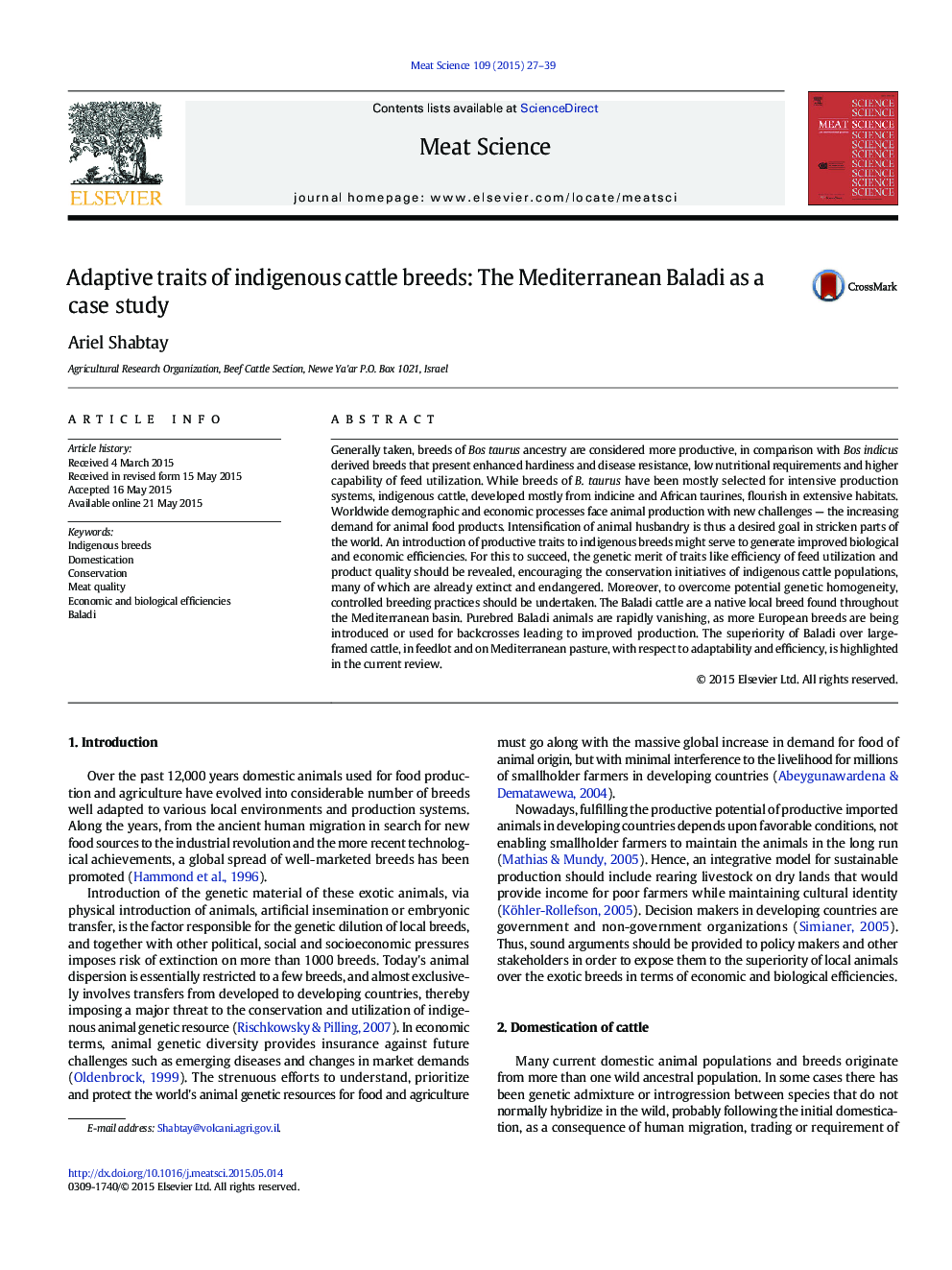| Article ID | Journal | Published Year | Pages | File Type |
|---|---|---|---|---|
| 2449656 | Meat Science | 2015 | 13 Pages |
•Indigenous breeds should be evaluated for product quality and feed efficiency traits.•Conservation decision should be taken on the basis of total herd performance.•Baladi cattle, a South Mediterranean basin indigenous breed is endangered.•Baladi is more adapted than large-framed cattle to Mediterranean pasture.•Osmotic stress resistance of Baladi erythrocytes implies blood parasite tolerance.
Generally taken, breeds of Bos taurus ancestry are considered more productive, in comparison with Bos indicus derived breeds that present enhanced hardiness and disease resistance, low nutritional requirements and higher capability of feed utilization. While breeds of B. taurus have been mostly selected for intensive production systems, indigenous cattle, developed mostly from indicine and African taurines, flourish in extensive habitats. Worldwide demographic and economic processes face animal production with new challenges — the increasing demand for animal food products. Intensification of animal husbandry is thus a desired goal in stricken parts of the world. An introduction of productive traits to indigenous breeds might serve to generate improved biological and economic efficiencies. For this to succeed, the genetic merit of traits like efficiency of feed utilization and product quality should be revealed, encouraging the conservation initiatives of indigenous cattle populations, many of which are already extinct and endangered. Moreover, to overcome potential genetic homogeneity, controlled breeding practices should be undertaken. The Baladi cattle are a native local breed found throughout the Mediterranean basin. Purebred Baladi animals are rapidly vanishing, as more European breeds are being introduced or used for backcrosses leading to improved production. The superiority of Baladi over large-framed cattle, in feedlot and on Mediterranean pasture, with respect to adaptability and efficiency, is highlighted in the current review.
